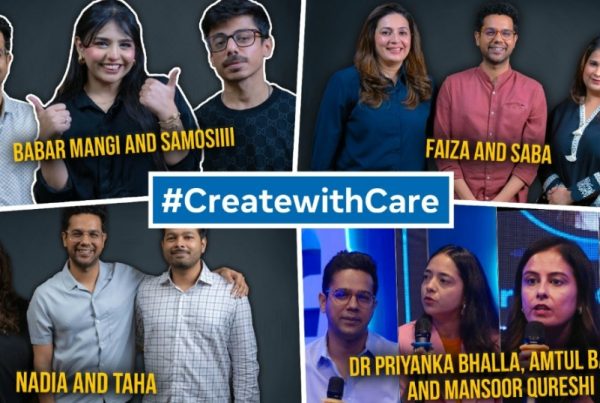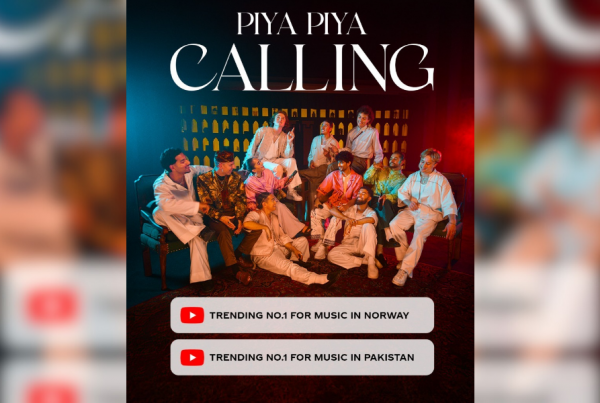(Published in Herald, April 2012)
http://herald.dawn.com/2012/04/17/sania-maskatiya.html
Sania Maskatiya: an unusual name for a young designer just as unusually successful in a very short period of time. An Indus Valley School of Art and Architecture graduate with a major in textiles and a family background in manufacturing garments, Maskatiya may have had technical support that gave her wings to fly, but her success is attributed more to her business acumen. The last one year has seen the rise of the Sania Maskatiya label: from the inauguration of a flagship store in Karachi to widespread availability in mainstream fashion stores across Pakistan. Her popularity has stemmed from a strong design sense growing through fashion-week success and culminating in the appreciation she garnered by dressing Oscar-winner Sharmeen Obaid Chinoy for the awards luncheon in Los Angeles.
Another reason for Maskatiya’s popularity is her personal grace. She is appreciated for having an optimistic karma and a ‘can-do’ attitude that she shares with her brother Umair Tabani who is undoubtedly the backbone of the Sania Maskatiya enterprise. A qualified chartered accountant, he brings professionalism to an industry that has an unfortunate ‘get-by’, lackadaisical attitude towards everything. Together they operate the 150-member team that ensures seamless day-to-day running.
Here the Herald talks to the woman behind the brand and why her conservative clientele wear designs with animal and bird imagery.
Q. Do you have any regrets not going to Central Saint Martins?
A. When I got into Saint Martins my father wanted me to go but my mother is old school and she convinced me not to. But no, I have no regrets at all because I loved Indus Valley. If it weren’t for Shahnaz Ismail I would have quit in a day or two but she is amazing. She holds the place together. Art school is always intense and Indus was too. Then when I got married I realised that I was lucky to have gotten to spend four extra years with my parents.
Q. Does a professional degree in textiles and/or fashion help?
A. A lot of people are crazy successful even without a degree but I learnt so much at school: discipline, technique, colour proportion. We actually learnt how to dye and weave cloth. We used to sit at khaddis (handlooms) doing an insane amount of work. In retrospect I understand the business of fabric so much better. You learn the basics. There’s so much learning that gives you confidence and clarity to deal with issues.
My screen printer, for example, wanted to use iron clad frames and I told him it was such an extra expense because we could do the same work on wooden frames which were 4,000 rupees cheaper. We could save 80,000 rupees on the 20 frames that we needed. Had I not had that knowledge he would have persuaded me to go for the iron frames. We gave him a technical solution to printing on wooden frames. Another example is that dyers still stick to the myth that ferozi colour bleeds. We’re in the 21st century and it’s preposterous to say that any problem doesn’t have a solution. We have given them sealants and technical solutions.
Q. How much does it help to be part of a textile family?
A. I never wanted to join the family business per se because I was interested in design and they do everything in mass production. It never appealed to me then but now it does. My father was instrumental when it came to acquiring fabric, machinery as well as helped with merchandising, spinning and knitting. When we started, he took us to all the factories, silk printing mills and we got great exposure in terms of insight as well as practical help like lending us space to make screens.
Q. What advice would you give new designers trying to make a breakthrough?
A. It’s important to have a good business plan and to work on the ground plan. We had this place [flagship store] for six months before we actually opened it. Sampling is important; we procured the fabric and came up with samples for every line. Having full stock capacity was an issue for us. In Pakistan, you go to stores – even many famous stores – and you see five things hanging on the racks. We wanted to make sure that would never happen. Visibility and accessibility are most important for a successful brand these days.
Q. What about brand building, which you have been very effective in doing?
A. We needed brand building for which we hired Lotus and that was really important and helpful. It was expensive but instead of spending on billboards and TV we invested in a good publicist. We photograph our work and advertise it constantly because then even if someone is replicating your work, people have seen it as yours before.
Q. Do you have a specific vision for the Sania Maskatiya brand?
A. We may not want to do the kind of volumes produced in factories yet but we want to expand production eventually. We will want to produce massively and have vendors everywhere. We are already stocking in many places but I’m talking bigger. And we understand that the way we want to do prêt is by bringing the price under 5,000 rupees and giving our clients a value-added product.
Q. What in your terms is a value added product?
A. We make sure our fabric is pure. When doing cottons we use Al-Karam, Gul Ahmed or imported voiles. I think anyone can make clothes nicely and most Pakistani women have a great sense of style so we try to give them something that they can’t put together so easily themselves. We offer a bit of block print, a little bit of lace trimming in our casuals, pair it with detailing, our screens. Tailors would throw a fit if they had to do all that.
Q. As a textile student you do have a flair for prints.
A. I love prints and we do our own computerised prints, screens, blocks etc. I’d love to do lawn too but I just feel that we’re too young a brand to get into it as yet. But we’re working on computerised cotton prints this year.
Q. You started off as the label Chamak and it wasn’t very well received at Fashion Week. What mistakes did you make?
A. That was the first time I ever showed and the stuff was similar to what I am making now. But I was under the impression that we had to show something funky and different and not all wearable so I worked a lot harder because I wasn’t selling that stuff. I realised a little too late that I needed to show what we can wear, not fantasy. It should have been a concept that could translate to wearable clothing. That said, I learnt from my mistakes.
Q. You’ve come a long way since then, the flagship store being a benchmark of your success. You were initially designing for friends and family but what kind of clientele does the brand attract now?
A. Some of my clients just come to me for couture. But now that there is always something on the racks they end up browsing and picking up ready-to-wear too. We try to be as accessible and available as possible. There are barely any sleeveless clothes in the store. My clients don’t wear very slinky clothes. I’ll make dresses and tube tops and jumpsuits but that’s mostly order based. Off the rack is mostly conservative and draped, with colours and material being the focus.
I believe that the contemporary vision is whatever makes a woman feel good about herself. To change one’s look is always good. I do think every woman has an innate sense of style and they need to capitalise on that and find their own sense of style. That’s most important. Sales, on the other hand, depend on the season. For instance, these days most women are coming for cotton casuals. People visiting from abroad during the holiday season are generally good buyers.
Q. You say your clientele is conservative and yet there is so much animal and bird imagery in your designs. The perception is that conservative women don’t like wearing animal prints?
A. You know I used to think so too but it’s not necessarily true. The elephants are all sold out. We’ve had giraffes and camels and birds as well and they did very well. Some people will come and say make everything as is but don’t make the eyes. They feel they can’t pray with figures that have eyes. Sometimes women ask me to sketch birds with their heads turning into flowers. Initially I didn’t want to change designs but we do now. We change designs and always accommodate clients but we make everything look nice and arty.
As a designer our responsibility is not to change someone’s belief. That said, I love nature and especially birds. The collection we’re showing at PFDC Sunsilk Fashion Week 2012 is all about birds.
Q. Ethical and eco-friendly fashion is such a big issue these days. Do you feel you follow any outlines?
A. We’re big on ethics. We’re not very eco-friendly to be truthful but we are particular about ethics by giving workers good working conditions, free lunch, subsidised food and good weekly wages. We give them transportation on strikes and we pay them extra. We need to get the production out. We’re particular about paying them every Saturday, on time. When workers come to us and brag about having worked with ‘so and so’ we tell them to unlearn whatever they have learnt. Because of all this we’ve managed to retain most of our employees over long periods and those who leave really do us no damage.









18 Comments